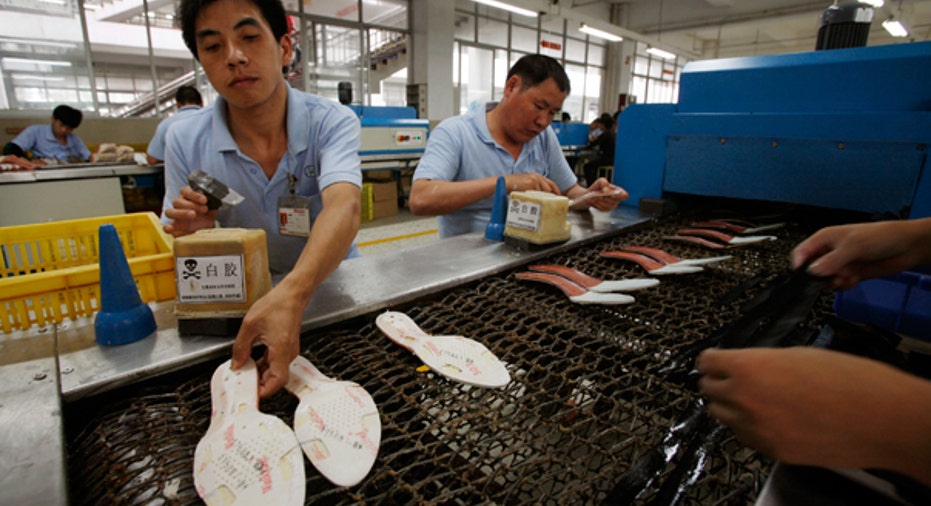China Growth Slows, Shares Rise on Stimulus Hopes

China's economy grew in the fourth quarter of 2015 at its weakest pace in nearly seven years, raising the chances of more stimulus policies as Beijing tries to cushion the slowdown, which in turn prompted shares to rally.
There was relief that the reported growth of 6.8 percent from a year earlier at least matched forecasts, even if the pace was down a tick from the previous quarter, and a growing expectation that more monetary easing measures were imminent, possibly before Lunar New Year holidays in early February.
Growth of 6.9 percent for 2015 as a whole was the slowest in a quarter of a century, while monthly readings on industrial output and retail sales were weaker than expectations.
Output rose 5.9 percent compared with December 2014, while sales growth confounded analysts by pulling back to 11.1 percent. The latter disappointed those counting on the consumer to be the engine of growth while world trade remains becalmed.
"China is in a debt, deflation-led economic slowdown, and the process is very difficult for traditional monetary and fiscal policy to change the trend of the growth path - that is continued slowdown in the coming years," said Liu Li Gang, an economist at ANZ in Hong Kong.
Angus Nicholson, market analyst at IG in Melbourne, said in a note that further cuts in interest rates and reserves that banks have to set aside were already looking "a foregone conclusion" before the data release, and now it was a question of timing.
"That gives investors an excuse to buy stocks, after sharp falls recently," said Linus Yip, strategist at First Shanghai Securities Ltd.
Sentiment improved sharply in China's stock markets in the afternoon session.
The benchmark Shanghai Composite Index was up 2.7 percent, while the CSI300 index of the largest listed companies in Shanghai and Shenzhen rose 2.5 percent.
The indexes remain about 14-15 percent down so far in 2016 after a series of sell-offs in the new year.
"We see this as a technical rebound," said Yip. "It's too early to say the market has seen its bottom, as we haven't yet seen a turnaround in the economy."
CURRENCY RISK
The People's Bank of China (PBOC) did its bit to calm nerves by keeping the yuan largely steady, setting the currency's midpoint fix at 6.5596 per dollar.
That followed news of plans requiring overseas banks to hold a certain level of yuan in reserves, a move that could raise the cost of wagering on further falls in the currency.
Tommy Xie, economist at OCBC Bank in Singapore, said he expected more stimulus to the economy from the PBOC, but the stability of the yuan, also known as the renminbi, was critical to maintaining growth.
"This is a new risk for China. If the renminbi continues to weaken, the volatility and capital outflows get worse, then that is likely to pose a challenge to growth."
The spot yuan was at 6.5793, little changed from Monday's close, but offshore it weakened to 6.5960 to stand 0.3 percent adrift from the onshore rate.
Confusion over China's currency policy and its commitment to reforms has sparked mayhem in financial markets in recent weeks, as the PBOC allowed the yuan to fall sharply in early January then switched to aggressive intervention to steady it.
Likewise, concerns have mounted that the economy's troubles might be beyond Beijing's ability to fix.
Markets have long harbored doubts about the veracity of China's growth data, given their habit of closely matching official forecasts year after year despite wildly changing circumstances at home and globally.
Investors used to comfort themselves with the assumption that the authorities, while often inscrutable, were competent managers who could be trusted to ultimately guide the economy to a more consumer-driven model.
That trust has been challenged by perceived policy missteps over the yuan and stock markets, giving weight to a voluble clique of China bears who claim high debt levels and massive overcapacity are bound to end in tears.
Even relative optimists are worried.
"A recent trip back to China suggests the economy remains in a rather bad shape. Public confidence and expectations are very low," says Wei Li, China and Asia economist at Commonwealth Bank of Australia.
"Faced with rising non-performing loans, banks are cutting credit lines despite policymakers calling for more support. New credits are mainly used to repay existing debts, rather than flowing into new investment projects."
(Reporting by Pete Sweeney, Samuel Shen and Shanghai and Beijing newsrooms; Additional reporting by Nichola Saminather; Writing by Wayne Cole and Will Waterman; Editing by Neil Fullick)



















